Introduction
Large excavators are indispensable machines in the realm of heavy-duty construction. Their immense power, versatility, and efficiency make them the backbone of various construction projects, ranging from road building and mining to large-scale commercial developments. This comprehensive guide explores the critical role that large excavators play in heavy-duty construction, detailing their features, applications, and benefits.
Understanding Large Excavators

What is a Large Excavator?
A large excavator is a heavy construction machine designed for excavating, lifting, and moving large quantities of earth and other materials. These machines are equipped with powerful hydraulic systems and robust engines, enabling them to perform demanding tasks with precision and efficiency.
- Key Features: Powerful hydraulic systems, robust engines, large buckets.
- Primary Uses: Excavation, demolition, material handling.
Table: Key Specifications of Large Excavators
| spécification | Description |
|---|---|
| Poids opérationnel | 40-100+ tons |
| Engine Power | 200-600+ horsepower |
| Bucket Capacity | 1-6+ cubic meters |
| Maximum Digging Depth | 20-40+ feet |
| Hydraulic Flow | 200-800+ liters per minute |
Applications of Large Excavators in Heavy-Duty Construction
Excavation and Earthmoving
Préparation du chantier
Large excavators are crucial in site preparation, where they are used to clear and level the ground. Their powerful digging capabilities allow them to remove large volumes of earth quickly and efficiently, making way for foundations, roads, and other infrastructure.
- Role: Clearing and leveling ground.
- Benefits: Speed and efficiency in site preparation.
Trenching and Foundations
In constructing trenches and foundations, large excavators provide the necessary depth and precision. Their long reach and powerful digging forces ensure that trenches are dug to the required specifications, which is vital for laying utilities and building foundations.
- Role: Digging trenches and foundations.
- Benefits: Precision and depth control.
Demolition
Building Demolition
Large excavators equipped with specialized attachments, such as hydraulic breakers and shears, are used in demolishing buildings and other structures. Their strength allows them to break through concrete and steel, making them essential for controlled demolition tasks.
- Role: Demolishing buildings and structures.
- Benefits: Strength and versatility in demolition.
Material Sorting and Removal
After demolition, large excavators are used to sort and remove debris. Their ability to handle heavy loads and reach high places makes them effective in clearing sites and preparing them for new construction.
- Role: Sorting and removing demolition debris.
- Benefits: Efficient site clearing.
Material Handling
Loading and Unloading
Large excavators are also employed in loading and unloading materials, such as gravel, sand, and rocks. Their large bucket capacities and powerful hydraulics enable them to move substantial quantities of material quickly, enhancing productivity on the job site.
- Role: Loading and unloading materials.
- Benefits: Increased productivity and efficiency.
Transporting Heavy Loads
In addition to loading and unloading, large excavators can transport heavy loads across the job site. Their robust build and strong hydraulic systems allow them to carry large boulders, pipes, and other heavy items, facilitating the movement of materials as needed.
- Role: Transporting heavy materials.
- Benefits: Flexibility and strength in material handling.
Features of Large Excavators

Advanced Hydraulic Systems
Efficiency and Power
The hydraulic systems in large excavators are designed to provide maximum efficiency and power. These systems allow for precise control of the boom, arm, and bucket, enabling operators to perform complex tasks with ease.
- Key Component: Hydraulic pumps and motors.
- Benefits: Precise control and powerful operation.
Maintenance and Durability
Advanced hydraulic systems are built for durability and require regular maintenance to ensure optimal performance. This includes checking hydraulic fluid levels, inspecting hoses and seals, and ensuring that the hydraulic pumps and motors are functioning correctly.
- Maintenance Tips: Regular fluid checks, hose inspections.
- Benefits: Longevity and reliability.
Robust Engine Performance
High Horsepower Engines
Large excavators are equipped with high horsepower engines that provide the necessary power to handle demanding tasks. These engines are designed to deliver consistent performance, even under heavy loads and challenging conditions.
- Engine Power: 200-600+ horsepower.
- Benefits: Consistent and reliable power.
La consommation de carburant
Modern large excavators are designed with fuel efficiency in mind. Advanced engine technologies and efficient hydraulic systems work together to minimize fuel consumption, reducing operating costs and environmental impact.
- Key Feature: Fuel-efficient technologies.
- Benefits: Lower operating costs and reduced emissions.
Confort et sécurité de l'opérateur
Ergonomic Cab Design
The cabs of large excavators are designed to provide operators with maximum comfort and visibility. Ergonomic seating, intuitive controls, and advanced monitoring systems ensure that operators can work efficiently and safely for extended periods.
- Key Features: Ergonomic seating, advanced controls.
- Benefits: Increased operator comfort and productivity.
Des dispositifs de sécurité
Safety is paramount in heavy-duty construction, and large excavators are equipped with various safety features. These include rollover protective structures (ROPS), falling object protective structures (FOPS), and advanced monitoring systems to detect and alert operators to potential hazards.
- Key Features: ROPS, FOPS, safety monitors.
- Benefits: Enhanced operator safety and accident prevention.
Conclusion
Large excavators play a critical role in heavy-duty construction, providing the power, versatility, and efficiency needed to complete demanding tasks. From excavation and demolition to material handling and site preparation, these machines are essential for modern construction projects. By understanding their features, applications, and benefits, construction professionals can make informed decisions about utilizing large excavators to enhance productivity and safety on the job site.
FAQ
What are the primary uses of a large excavator in construction?
Large excavators are primarily used for excavation, demolition, material handling, and site preparation. They are essential for tasks that require significant power and precision, such as digging foundations, demolishing buildings, and moving large quantities of earth and materials.
How do large excavators contribute to efficiency on a construction site?
Large excavators contribute to efficiency by providing powerful and precise digging capabilities, handling heavy loads quickly, and performing multiple tasks with various attachments. Their advanced hydraulic systems and robust engines ensure that they can complete demanding tasks efficiently, reducing overall project time and costs.
What safety features are included in Big excavators?
Large excavators are equipped with various safety features, including rollover protective structures (ROPS), falling object protective structures (FOPS), and advanced monitoring systems. These features help protect operators from accidents and hazards, ensuring a safer working environment.
How can I maintain the hydraulic system of a Big excavator?
Maintaining the hydraulic system of a big excavator involves regular checks of hydraulic fluid levels, inspecting hoses and seals for wear and damage, and ensuring that hydraulic pumps and motors are functioning correctly. Regular maintenance helps ensure optimal performance and longevity of the machine.
What are the advantages of using a Big excavator for demolition tasks?
Using a big excavator for demolition tasks offers several advantages, including powerful hydraulic breakers and shears for breaking through concrete and steel, efficient sorting and removal of debris, and the ability to handle heavy loads. These features make large excavators ideal for controlled and efficient demolition projects.


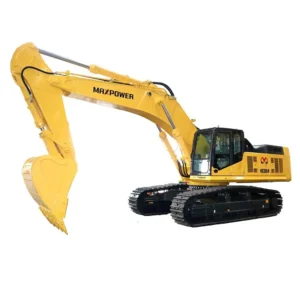
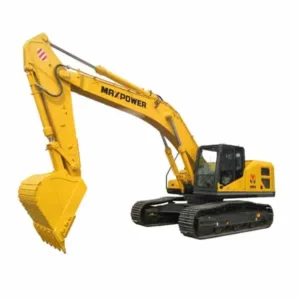
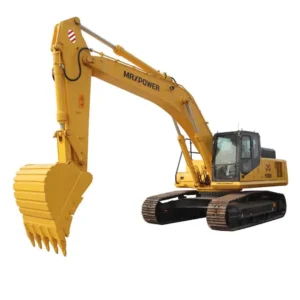
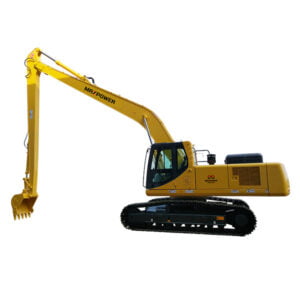
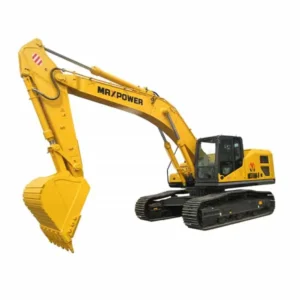







-150x150.webp)
